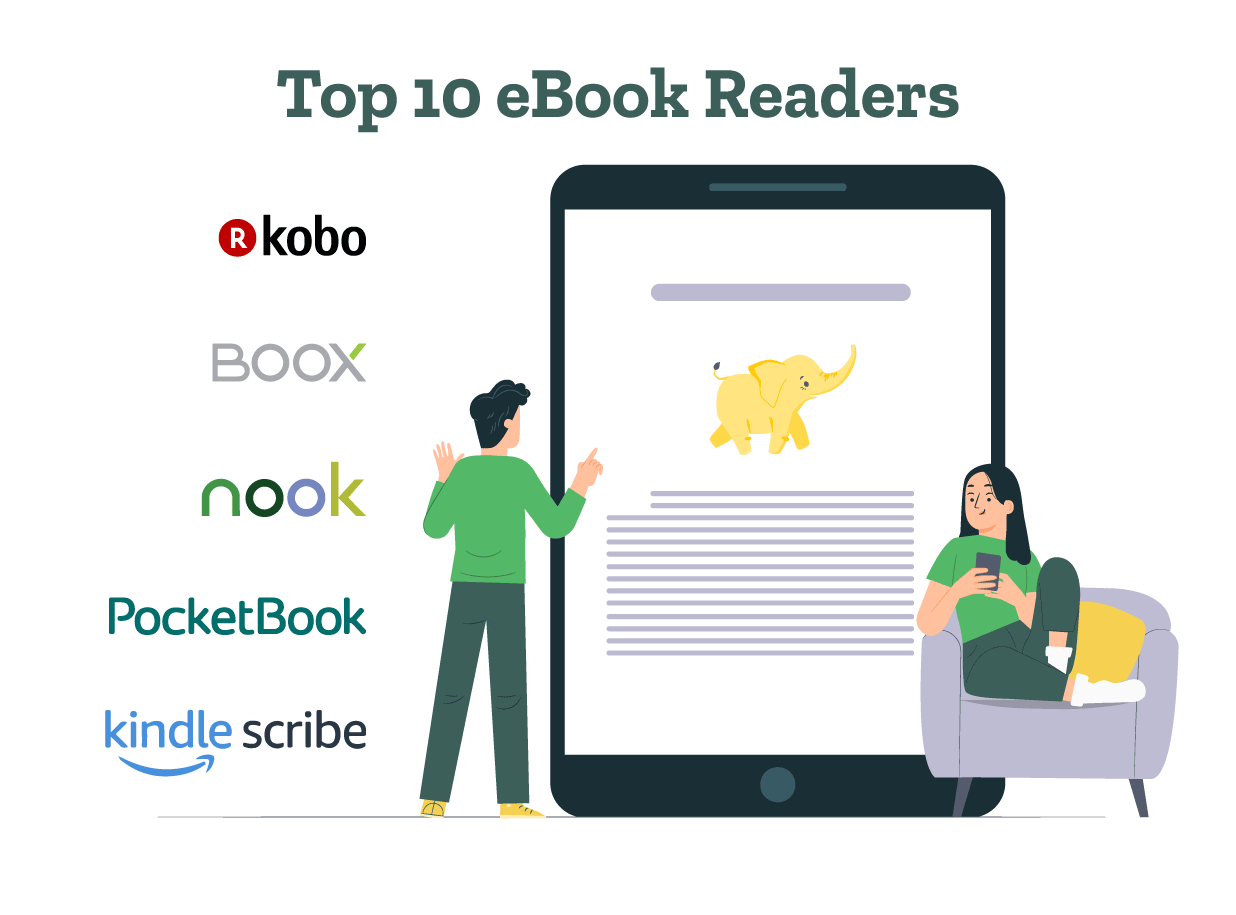- A List of Writing Contests in 2022 | Exciting Prizes!
- Em Dash vs. En Dash vs. Hyphen: When to Use Which
- Book Proofreading 101: The Beginner’s Guide
- Screenplay Editing: Importance, Cost, & Self-Editing Tips
- Screenplay Proofreading: Importance, Process, & Cost
- Script Proofreading: Rates, Process, & Proofreading Tips
- Manuscript Proofreading | Definition, Process & Standard Rates
- Tips to Write Better if English Is Your Second Language
- Novel Proofreading | Definition, Significance & Standard Rates
- Top 10 Must-Try Writing Prompt Generators in 2024
- 100+ Creative Writing Prompts for Masterful Storytelling
- Top 10 eBook Creator Tools in 2024: Free & Paid
- 50 Timeless and Unforgettable Book Covers of All Time
- What Is Flash Fiction? Definition, Examples & Types
- 80 Enchanting Christmas Writing Prompts for Your Next Story
- Your Guide to the Best eBook Readers in 2024
- Top 10 Book Review Clubs of 2025 to Share Literary Insights
- 2024’s Top 10 Self-Help Books for Better Living
- Writing Contests 2023: Cash Prizes, Free Entries, & More!
- What Is a Book Teaser and How to Write It: Tips and Examples
- Audiobook vs. EBook vs. Paperback in 2024: (Pros & Cons)
- How to Get a Literary Agent in 2024: The Complete Guide
- Alpha Readers: Where to Find Them and Alpha vs. Beta Readers
- Author Branding 101: How to Build a Powerful Author Brand
- A Guide on How to Write a Book Synopsis: Steps and Examples
- How to Write a Book Review (Meaning, Tips & Examples)
- 50 Best Literary Agents in the USA for Authors in 2024
- Building an Author Website: The Ultimate Guide with Examples
- Top 10 Book Printing Services for Authors in 2024
- Top 10 Paraphrasing Tools for All (Free & Paid)
- Top 10 Book Editing Software in 2024 (Free & Paid)
- What Are Large Language Models and How They Work: Explained!
- Top 10 Hardcover Book Printing Services [Best of 2024]
- 2024’s Top 10 Setting Generators to Create Unique Settings
- Different Types of Characters in Stories That Steal the Show
- Top 10 Screenplay & Scriptwriting Software (Free & Paid)
- 10 Best AI Text Generators of 2024: Pros, Cons, and Prices
- Top 10 Must-Try Character Name Generators in 2024
- 10 Best AI Text Summarizers in 2024 (Free & Paid)
- 2024’s 10 Best Punctuation Checkers for Error-Free Text
- Top 10 AI Rewriters for Perfect Text in 2024 (Free & Paid)
- 11 Best Story Structures for Writers (+ Examples!)
- How to Write a Book with AI in 2024 (Free & Paid Tools)
- Writing Contests 2024: Cash Prizes & Free Entries!
- Patchwork Plagiarism: Definition, Types, & Examples
- 15 Powerful Writing Techniques for Authors in 2024
- Simple Resume Formats for Maximum Impact With Samples
- What Is a Complement in a Sentence? (Meaning, Types & Examples)
- What are Clauses? Definition, Meaning, Types, and Examples
- Persuasive Writing Guide: Techniques & Examples
- How to Paraphrase a Text (Examples + 10 Strategies!)
- 10 Best AI Writing Assistants of 2024 (Features + Pricing)
- Generative AI: Types, Impact, Advantages, Disadvantages
- A Simple Proofreading Checklist to Catch Every Mistake
- Top 10 AI Resume Checkers for Job Seekers (Free & Paid)
- 20 Best Comic Book Covers of All Time!
- How to Edit a Book: A Practical Guide with 7 Easy Steps
- How to Write an Autobiography (7 Amazing Strategies!)
- How to Publish a Comic Book: Nine Steps & Publishing Costs
- Passive and Active Voice (Meaning, Examples & Uses)
- How to Publish a Short Story & Best Publishing Platforms
- What Is Expository Writing? Types, Examples, & 10 Tips
- 10 Best Introduction Generators (Includes Free AI Tools!)
- Creative Writing: A Beginner’s Guide to Get Started
- How to Sell Books Online (Steps, Best Platforms & Tools)
- Top 10 Book Promotion Services for Authors (2025)
- 15 Different Types of Poems: Examples & Insight into Poetic Styles
- 25 Figures of Speech Simplified: Definitions and Examples
- 10 Best Book Writing Apps for Writers 2025: Free & Paid!
- Top 10 AI Humanizers of 2025 [Free & Paid Tools]
- Top 101 Bone-Chilling Horror Writing Prompts
- How to Write a Poem: Step-by-Step Guide to Writing Poetry
- Top 10 Book Writing Software, Websites, and Tools in 2025
- 100+ Amazing Short Story Ideas to Craft Unforgettable Stories
- The Top 10 Literary Devices: Definitions & Examples
- Top 10 AI Translators for High-Quality Translation in 2025
- Top 10 AI Tools for Research in 2025 (Fast & Efficient!)
- 50 Best Essay Prompts for College Students in 2025
- Top 10 Book Distribution Services for Authors in 2025
- Best 101 Greatest Fictional Characters of All Time
- Top 10 Book Title Generators of 2025
- Best Fonts and Sizes for Books: A Complete Guide
- What Is an Adjective? Definition, Usage & Examples
- How to Track Changes in Google Docs: A 7-Step Guide
- Best Book Review Sites of 2025: Top 10 Picks
- Parts of a Book: A Practical, Easy-to-Understand Guide
- What Is an Anthology? Meaning, Types, & Anthology Examples
- How to Write a Book Report | Steps, Examples & Free Template
- 10 Best Plot Generators for Engaging Storytelling in 2025
- 30 Powerful Poems About Life to Inspire and Uplift You
- What Is a Poem? Poetry Definition, Elements, & Examples
- Metonymy: Definition, Examples, and How to Use It In Writing
- 10 Best AI Detector Tools in 2025
- How to Write a CV with AI in 9 Steps (+ AI CV Builders)
- What Is an Adverb? Definition, Types, & Practical Examples
- How to Create the Perfect Book Trailer for Free
- Top 10 Book Publishing Companies in 2025
- 14 Punctuation Marks: A Guide on How to Use with Examples!
- Translation Services: Top 10 Professional Translators (2025)
- 10 Best Free Online Grammar Checkers: Features and Ratings
- 30 Popular Children’s Books Teachers Recommend in 2025
- Writing Contests 2025: Cash Prizes, Free Entries, and More!
- 10 Best Photobook Makers of 2025 We Tested This Year
- Top 10 Book Marketing Services of 2025: Features and Costs
- Audiobook Marketing Guide: Best Strategies, Tools & Ideas
- What is a Book Copyright Page?
- Final Checklist: Is My Article Ready for Submitting to Journals?
- 8 Pre-Publishing Steps to Self-Publish Your Book
- 7 Essential Elements of a Book Cover Design
- How to Copyright Your Book in the US, UK, & India
- Beta Readers: Why You Should Know About Them in 2024
- How to Publish a Book in 2024: Essential Tips for Beginners
- ISBN Guide 2024: What Is an ISBN and How to Get an ISBN
- Book Cover Design Basics: Tips & Best Book Cover Ideas
- Why and How to Use an Author Pen Name: Guide for Authors
- How to Format a Book in 2025: 7 Tips for Book Formatting
- What is Manuscript Critique? Benefits, Process, & Cost
- 10 Best Ghostwriting Services for Authors in 2025
- How to Hire a Book Editor in 5 Practical Steps
- Self-Publishing Options for Writers
- How to Promote Your Book Using a Goodreads Author Page
- 7 Essential Elements of a Book Cover Design
- What Makes Typesetting a Pre-Publishing Essential for Every Author?
- 4 Online Publishing Platforms To Boost Your Readership
- Typesetting: An Introduction
- Quick Guide to Novel Editing (with a Self-Editing Checklist)
- Self-Publishing vs. Traditional Publishing: 2024 Guide
- How to Publish a Book in 2024: Essential Tips for Beginners
- ISBN Guide 2024: What Is an ISBN and How to Get an ISBN
- How to Publish a Book on Amazon: 8 Easy Steps [2024 Update]
- What are Print-on-Demand Books? Cost and Process in 2024
- What Are the Standard Book Sizes for Publishing Your Book?
- How to Market Your Book on Amazon to Maximize Sales in 2024
- Top 10 Hardcover Book Printing Services [Best of 2024]
- How to Find an Editor for Your Book in 8 Steps (+ Costs!)
- What Is Amazon Self-Publishing? Pros, Cons & Key Insights
- Manuscript Editing in 2024: Elevating Your Writing for Success
- Know Everything About How to Make an Audiobook
- A Simple 14-Point Self-Publishing Checklist for Authors
- How to Write an Engaging Author Bio: Tips and Examples
- Book Cover Design Basics: Tips & Best Book Cover Ideas
- How to Publish a Comic Book: Nine Steps & Publishing Costs
- Why and How to Use an Author Pen Name: Guide for Authors
- How to Sell Books Online (Steps, Best Platforms & Tools)
- A Simple Guide to Select the Best Self-Publishing Websites
- 10 Best Book Cover Design Services of 2025: Price & Ratings
- How Much Does It Cost to Self-Publish a Book in 2025?
- How to Self-Publish a Book: Tips and Prices (2025)
- Quick Guide to Book Editing [Complete Process & Standard Rates]
- How to Distinguish Between Genuine and Fake Literary Agents
- What is Self-Publishing? Everything You Need to Know
- How to Copyright a Book in 2025 (Costs + Free Template)
- The Best eBook Conversion Services of 2025: Top 10 Picks
- 10 Best Self-Publishing Companies of 2025: Price & Royalties
- 10 Best Photobook Makers of 2025 We Tested This Year
- How to start your own online publishing company?
- 8 Tips To Write Appealing Query Letters
- Self-Publishing vs. Traditional Publishing: 2024 Guide
- How to Publish a Book in 2024: Essential Tips for Beginners
- ISBN Guide 2024: What Is an ISBN and How to Get an ISBN
- What are Print-on-Demand Books? Cost and Process in 2024
- How to Write a Query Letter (Examples + Free Template)
- Third-person Point of View: Definition, Types, Examples
- How to Write an Engaging Author Bio: Tips and Examples
- How to Publish a Comic Book: Nine Steps & Publishing Costs
- Top 10 Book Publishing Companies in 2025
- 10 Best Photobook Makers of 2025 We Tested This Year
- How to Create Depth in Characters
- Starting Your Book With a Bang: Ways to Catch Readers’ Attention
- Research for Fiction Writers: A Complete Guide
- Short stories: Do’s and don’ts
- How to Write Dialogue: 7 Rules, 5 Tips & 65 Examples
- What Are Foil and Stock Characters? Easy Examples from Harry Potter
- How To Write Better Letters In Your Novel
- On Being Tense About Tense: What Verb Tense To Write Your Novel In
- How To Create A Stellar Plot Outline
- How to Punctuate Dialogue in Fiction
- On Being Tense about Tense: Present Tense Narratives in Novels
- The Essential Guide to Worldbuilding [from Book Editors]
- What Is Point of View? Definition, Types, & Examples in Writing
- How to Create Powerful Conflict in Your Story | Useful Examples
- How to Write a Book: A Step-by-Step Guide
- How to Write a Short Story in 6 Simple Steps
- How to Write a Novel: 8 Steps to Help You Start Writing
- What Is a Stock Character? 150 Examples from 5 Genres
- Joseph Campbell’s Hero’s Journey: Worksheet & Examples
- Novel Outline: A Proven Blueprint [+ Free Template!]
- Character Development: 7-Step Guide for Writers
- What Is NaNoWriMo? Top 7 Tips to Ace the Writing Marathon
- What Is the Setting of a Story? Meaning + 7 Expert Tips
- Theme of a Story | Meaning, Common Themes & Examples
- What Is a Blurb? Meaning, Examples & 10 Expert Tips
- What Is Show, Don’t Tell? (Meaning, Examples & 6 Tips)
- How to Write a Book Summary: Example, Tips, & Bonus Section
- How to Write a Book Description (Examples + Free Template)
- 10 Best Free AI Resume Builders to Create the Perfect CV
- A Complete Guide on How to Use ChatGPT to Write a Resume
- 10 Best AI Writer Tools Every Writer Should Know About
- How to Write a Book Title (15 Expert Tips + Examples)
- 100 Novel and Book Ideas to Start Your Book Writing Journey
- Exploring Writing Styles: Meaning, Types, and Examples
- Mastering Professional Email Writing: Steps, Tips & Examples
- How to Write a Screenplay: Expert Tips, Steps, and Examples
- Business Proposal Guide: How to Write, Examples and Template
- Different Types of Resumes: Explained with Tips and Examples
- How to Create a Memorable Protagonist (7 Expert Tips)
- How to Write an Antagonist (Examples & 7 Expert Tips)
- Writing for the Web: 7 Expert Tips for Web Content Writing
- 10 Best AI Text Generators of 2024: Pros, Cons, and Prices
- What are the Parts of a Sentence? An Easy-to-Learn Guide
- How to Avoid AI Detection in 2024 (6 Proven Techniques!)
- How to Avoid Plagiarism in 2024 (10 Effective Strategies!)
- What Is Climax Of A Story & How To Craft A Gripping Climax
- What Is a Subject of a Sentence? Meaning, Examples & Types
- Object of a Sentence: Your Comprehensive Guide
- What Is First-Person Point of View? Tips & Practical Examples
- Second-person Point of View: What Is It and Examples
- 10 Best AI Essay Outline Generators of 2024
- Third-person Point of View: Definition, Types, Examples
- The Importance of Proofreading: A Comprehensive Overview
- Patchwork Plagiarism: Definition, Types, & Examples
- Simple Resume Formats for Maximum Impact With Samples
- The Ultimate Guide to Phrases In English – Types & Examples
- Modifiers: Definition, Meaning, Types, and Examples
- What are Clauses? Definition, Meaning, Types, and Examples
- Persuasive Writing Guide: Techniques & Examples
- What Is a Simile? Meaning, Examples & How to Use Similes
- Mastering Metaphors: Definition, Types, and Examples
- 10 Best AI Writing Assistants of 2024 (Features + Pricing)
- Generative AI: Types, Impact, Advantages, Disadvantages
- How to Publish a Comic Book: Nine Steps & Publishing Costs
- Essential Grammar Rules: Master Basic & Advanced Writing Skills
- Benefits of Using an AI Writing Generator for Editing
- Hyperbole in Writing: Definition and Examples
- 15 Best ATS-Friendly ChatGPT Prompts for Resumes in 2025
- How to Write a Novel in Past Tense? 3 Steps & Examples
- 10 Best Spell Checkers of 2025: Features, Accuracy & Ranking
- Foil Character: Definition, History, & Examples
- 5 Key Elements of a Short Story: Essential Tips for Writers
- How to Write a Children’s Book: An Easy Step-by-Step Guide
- How To Write a Murder Mystery Story
- What Is an Adjective? Definition, Usage & Examples
- Metonymy: Definition, Examples, and How to Use It In Writing
- Fourth-Person Point of View: A Unique Narrative Guide
- How to Write a CV with AI in 9 Steps (+ AI CV Builders)
- What Is an Adverb? Definition, Types, & Practical Examples
- How to Write A Legal Document in 6 Easy Steps
- 10 Best AI Story Generators in 2025: Write Captivating Tales
- How to Introduce a Character Effectively
- What is Rhetoric and How to Use It in Your Writing
- How to Write a Powerful Plot in 12 Steps
- How to Make Money as a Writer: Your First $1,000 Guide
- How to Write SEO Content: Tips for SEO-Optimized Content
- Types of Introductions and Examples
- How to Create Marketing Material
- What is a Cliffhanger? Definition, Examples, & Writing Tips
- How to Write Cliffhangers that Keep Readers Hooked!
- How to Write a Romance Novel: Step-by-Step Guide
- Top 10 Writing Tips from Famous Authors
- 10 Best Ghostwriting Services for Authors in 2025
- What is Ghostwriting? Meaning and Examples
- How to Become a Ghostwriter: Complete Career Guide
Still have questions? Leave a comment

Checklist: Dissertation Proposal
Enter your email id to get the downloadable right in your inbox!
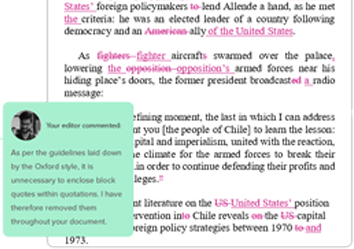
Examples: Edited Papers
Enter your email id to get the downloadable right in your inbox!
Need
Editing and
Proofreading Services?

What Is an Anthology? Meaning, Types, & Anthology Examples
 May 07, 2025
May 07, 2025 5
min read
5
min read
- Tags: Book Writing, Fiction, Fiction Writing
An anthology is like a mini library of the best literary works. Each work makes you think about a topic or theme in a different way. This blog explains the meaning and types of anthologies in simple language for beginners.
To simplify the meaning and types of anthologies, we’ve included many examples of popular anthologies. So let’s begin with a basic anthology definition!
Self-Publish Your Book Now! Get Started
What is an anthology book?
An anthology is a collection of selected writings by different authors. These works often revolve around a common theme, genre, or time period. For example, they can center around a theme (e.g., love), a genre (e.g., fantasy), or a time period (e.g., the Renaissance era).
Anthologies don’t have a common writing style. Instead, they help showcase different writing styles and perspectives of authors.
Anthologies are commonly used in educational settings like schools and colleges. This allows students to compare and contrast different approaches authors apply to write about a common theme, historical period, genre, or subject.
Popular examples of anthologies
Each example of an anthology given below celebrates the creativity and versatility of diverse authors. Let’s quickly see these examples!
1. The Oxford Book of American Short Stories
This anthology presents a selection of short stories by popular American writers. They include stories written by Ernest Hemingway, Mark Twain, Washington Irving, Kate Chopin, and Stephen King. The book is a great introduction to American literature.
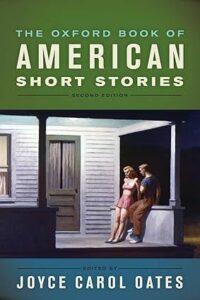
2. Chicken Soup for the Soul
This series of anthologies features inspiring and heartwarming true stories about everyday people. The stories are short, easy to read, and cover a wide range of topics, from love and friendship to overcoming challenges.

3. The Norton Anthology of Modern Poetry
This anthology book is a collection of poems from different time periods and cultures. It includes works from famous poets like Sylvia Plath, Ezra Pound, and Margaret Atwood, as well as lesser-known poets.
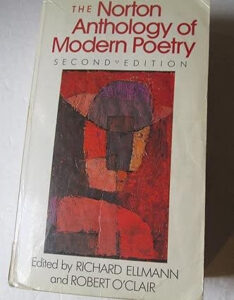
4. The Penguin Book of Modern Speeches
This book brings together some of the most powerful and influential speeches. It includes speeches by political leaders and activists from around the world, such as Martin Luther King Jr., Nelson Mandela, Barack Obama, Theodore Roosevelt, and Mahatma Gandhi.
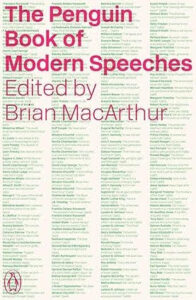
5. The Puffin Book of Stories for 5-year-olds
Edited by Wendy Cooling, this book is designed specifically for young children who are just starting to read on their own. It contains a collection of short, simple stories that are easy to follow and understand. The stories are by a variety of authors and cover a range of topics, from animals and adventures to friendship and family. The anthology is beautifully illustrated and perfect for parents to read aloud to their children or for beginner readers to enjoy on their own.
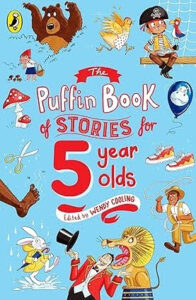
Types of anthologies
There are two main types of anthologies: short-form and long-form. Long-form anthologies have longer pieces of writing, often much longer than 20,000 words. In comparison, short-form anthologies have shorter pieces, usually 20,000 words or less.
While short-form anthologies are great for readers who like a quick read, long-form anthologies are good for readers who want to study longer works.
Let’s explore the various subtypes of anthologies!
1. Poetry anthologies: These books gather poems from different poets, often organized around a theme, style, or time period. A poem anthology might focus on love poems, nature poems, or works from a specific country or era.
2. Short story anthologies: These collections feature short stories from various authors. They can revolve around a genre like science fiction, horror, or romance. Alternatively, they might include stories from a particular group of writers or time period.
3. Essay anthologies: These books compile non-fiction essays from different writers. An essay anthology is often centered on a specific theme or topic, such as travel, politics, or personal experiences.
4. Textbook anthologies: These collections are specifically designed for use in courses. They feature works that illustrate specific literary techniques, themes, or historical periods.
5. Regional anthologies: These books collect works from writers in a specific geographic region, such as the American South, the Caribbean, or East Africa.
6. LGBTQ+ anthologies: These collections gather works by and about LGBTQ+ individuals. They often focus on the unique experiences of LGBTQ+ writers.
7. Women’s anthologies: These books compile works written by women. Their aim is often to recognize women writers of a particular period.
8. Picture book story collections: These anthologies gather short stories for children, often accompanied by colorful illustrations.
Commonly used literary themes in anthologies
One of the most common themes of anthologies is identity and self-discovery. These anthologies can cover topics like race, gender, sexuality, culture, and personal growth.
Some other commonly used themes are:
1. Love and relationships
These might include stories about romantic love, family bonds, friendships, or even the complexities of difficult relationships. The works in these anthologies often examine the joys, challenges, and emotions that come with human connections.
2. Social and political issues
Some anthologies focus on social and political themes, gathering works that examine issues like inequality, discrimination, justice, or human rights. These collections might include stories, essays, or inspiring poems that shed light on the experiences of marginalized communities, explore the impacts of historical events, or call for social change.
3. Nature and environment
Many anthologies celebrate the beauty and importance of the natural world. These collections might include works about animals, plants, landscapes, or the relationship between humans and the environment.
4. Courage and resilience
Anthologies often showcase stories of courage and resilience, featuring characters or real people who have faced and overcome challenges. These works might explore themes of perseverance, hope, and the strength of the human spirit in the face of adversity.
5. Humor and satire
Some anthologies aim to entertain and amuse readers by collecting humorous or satirical works. These might include funny short stories, witty essays, or parody poetry that pokes fun at society, politics, or everyday life.
6. Mythology and folklore
Anthologies may also gather stories and poems that draw on the rich traditions of various cultures around the world. These collections might retell classic tales, explore the symbolism and meaning behind mythological figures, or showcase how these stories continue to resonate with modern readers.
7. War and conflict
Some anthologies explore the themes of war and conflict, collecting works that examine the experiences of soldiers, civilians, and communities affected by violence and unrest. These collections might include historical accounts, personal essays, or fictional stories that shed light on the human costs of war and the search for peace.
Best strategies for contributing to anthologies
One of the best strategies is to participate in writing contests and challenges. Many writing communities and organizations offer writing challenges or contests throughout the year, often with specific themes or prompts. The winning entries are often published in an anthology.
1. Experiment with different submission strategies
Experiment with submitting to anthologies in different genres, styles, or themes to see where your work resonates most. You can also try submitting shorter or longer pieces, or pieces that showcase different aspects of your writing skills.
2. Utilize writing prompts and exercises
If you’re struggling to come up with ideas for your submission, try using writing prompts or exercises related to the anthology’s theme. Many anthologies provide specific prompts or guidelines to help inspire and direct your writing. You can also find general writing prompts online or in writing craft books to get your creative juices flowing.
3. Seek feedback from beta readers
Before submitting your work, consider sharing it with a group of beta readers, such as fellow writers or avid readers in your target audience. Ask for their honest feedback on your piece’s strengths, weaknesses, and overall effectiveness. Use their insights to revise and polish your work before submitting it to the anthology.
How to create an anthology?
To create an anthology, first, decide the central theme or genre for the anthology. Then, establish clear guidelines for submissions, including word count, formatting, content restrictions, and deadline. You also need to decide whether you will accept previously published works or only original, unpublished pieces.
Once you decide on these steps, you need to take a call on how writers can submit their entries. This can be through post, email, a submission form on the website, or submission management platforms like Submittable or DuoTrope.
Then, you need to perform the following steps:
- Announce a call for submissions
Share your call for submissions on your website, social media, and writing communities or forums. Reach out to writers, poets, or essayists you know and invite them to contribute submissions.
- Review and select submissions
Read through all the submissions carefully, keeping your theme and quality standards in mind. Select the pieces that best fit your vision for the anthology and showcase a diverse range of voices and perspectives.
- Notify the anthology’s contributors
Thank all contributors for their submissions. Notify the contributors whose works have been selected via email or call that their works have been selected.
- Create the anthology
Write an introduction to the anthology that explains its theme, purpose, and significance. Arrange the pieces in a logical order that flows well and creates a cohesive reading experience.
How to publish an anthology?
To publish an anthology, you first need to edit the content you’ve received for the anthology.
Work with the selected contributors to edit and refine their pieces as needed. You can also consider partnering with professional editing services to refine your anthology.
You also need to perform the following steps:
- Design and format the book
Choose a visually appealing cover design that reflects the anthology’s theme and tone. Format the interior of the book, including the table of contents, contributor bios, and any additional front or back matter. You can hire book cover design services and book formatting services for this step.
- Choose a publishing path
Decide whether you want to pursue traditional publishing or self-publishing for your anthology. Research different publishing options and their requirements, costs, and distribution channels. If self-publishing, choose a reliable print-on-demand service or eBook platform.
- Set pricing and other details
If you’re publishing your book both as an eBook and as a physical copy, decide the pricing for both. Also, create an attractive book description and book blurb and decide the tags and categories for your book.
- Distribute your book on online and offline platforms
Distribute your book through platforms like Amazon KDP, Lulu, IngramSpark, Apple Pages, Kobo Writing Life, etc. Also, use platforms like OverDrive to reach a larger audience. Plus, you can reach out to bookstores, libraries, and online retailers to distribute your anthology.
- Promote your anthology
Some simple marketing strategies you can use are:
- Create a marketing plan to promote the anthology through social media, book reviews, and events.
- Encourage contributors to share the anthology with their networks and audiences.
- Consider offering readings, signings, or workshops to generate interest and engage with readers.
To conclude, anthologies are a great way to explore the world of literature and discover new authors. They bring together a mix of voices and styles from different times and places. If you love reading or writing, anthologies are a perfect starting point.
PaperTrue’s editing and proofreading services can help take your writing to the next level. Our professional editors will fix any language mistakes and give you detailed suggestions to improve your work.
Interested in our services? Contact us for more information!
Here are some useful resources for you:





